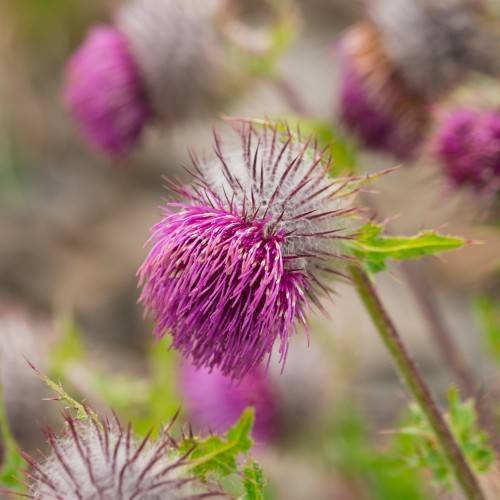
Edible Thistle
Cirsium edule
Watering:
Average
Hardiness Zone:
Flowers:
Flowers
Sun:
Sun
Soil:
Clay, Sand
Fruits:
Fruits Ready In Fall
Leaf:
Yes
Growth Rate:
Low
Drought Tolerant:
Yes
Salt Tolerant:
Yes
Thorny:
Yes
Invasive:
Yes
Care Level:
Medium
watering
Field Thistle should be watered when the top layer of soil is dry. This is typically about once to twice a week. When watering, provide enough water so that it reaches the plant’s root system. Over-watering can be damaging, so make sure not to pour too much. Field Thistle should receive about 1 inch of water per week.
sunlight
Field Thistle (Cirsium discolor) is native to the United States and prefers full sun for at least 6 hours a day. It does best in sunny sites with partial shade or light shade in the afternoon. Additionally, the Field Thistle is drought tolerant, so it is not necessary to water it as often as other plants. It prefers slightly sandy soil, but it does well in clay soils as well given it is adequately watered. During the spring and summer, make sure the Field Thistle receives full sun throughout the day. In the fall, partial shade and indirect light is preferable.
pruning
Field Thistle should be pruned in late fall, just prior to the first hard frost. Pruning should be done moderately—about 25% of the height of the stems—in order to encourage new growth in the spring. Stems with too much dead or dying material should also be cut off to prevent the spread of disease. Pruning should focus on thinning the stems and removing any dead or diseased foliage or flowers. Flower heads should be removed as soon as they are wilted in order to prevent the spread of seed.
